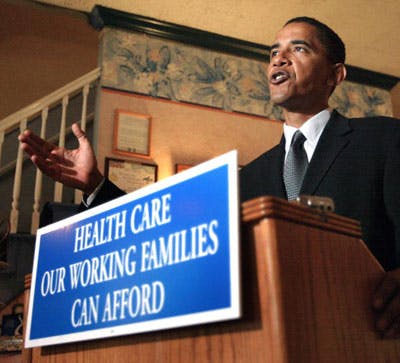* See updates below.
It’s not exactly a news flash that health care is expensive, so it won’t come as a big surprise to most that, despite all the noise and activity around health care reform, health care costs are continuing to rise at a rapid rate.
Here’s the latest evidence of that — Aon Consulting just released its summer 2010 Health Care Trend Survey and found that medical plan costs are forecast “to increase at double-digit rates in the next 12 months.”
The survey of more than 60 leading health care insurers representing more than 100 million insured individuals found that health care costs are projected to increase by the following amounts:
- Up 10.5 percent for health maintenance organizations (HMOs);
- Up 10.6 percent for point-of-service (POS) health plans;
- Up 10.7 percent for preferred provider organizations (PPOs);
- Up 11 percent for consumer-directed health care plans (CDHs).
In addition, the survey also found that over the next 12 months that prescription drug costs are expected to increase by 8.4 percent compared to 9.3 percent in the spring of 2009. In addition, the specialty pharmacy rate is projected to be 14 percent, versus a 13.2 percent increase a year ago.
Reform will add 2%-5% to medical cost trend
And there’s this, just in case you were under the illusion that health care reform (also known as Obamacare) might cut into health care costs anytime soon: Aon Consulting says that health care reform is expected to add 2 percent to 5 percent to the medical cost trend over the next three years. “Additional costs will become apparent as health carriers pass along costs from additional regulation and excise taxes,” Aon says, and in addition, health care providers subject to reductions in Medicare reimbursements “may try to shift costs to the employer-based system.”
Aon also points out that a comprehensive organization-wide wellness program is one positive change that organizations can make to help combat rising health care costs. In 2011, Aon notes, smaller employers will be eligible for grants to help initiate wellness programs. In 2014, employers will be allowed to reward employees up to 30 percent of the cost of coverage for participating in a wellness program.
“As employers start to fully understand the long-term cost impact of health reform, many are looking to redesign their health plans,” said John Zern, Aon Consulting’s U.S. Health & Benefits practice director, in a press release accompanying the survey. “Strong employee wellness and prevention programs, along with institutionalized best practices in care delivery, are key components to a successful redesign.”
Dr. Paul Berger, U.S. Health & Benefits Chief Medical Officer with Aon Consulting, added that: “Investments in well-designed health management and wellness programs can create a healthier and more engaged employee. Long term, employers are likely to see a decrease in chronic diseases and an increase in employee productivity with reduced absence. Comprehensive wellness and health management programs also can be an important factor in the recruitment and retention of employees.”
Also increasing: deductibles, co-pays, worker contributions
Aon also makes this important point: “In addition to implementing wellness programs, employers will likely increase deductibles, co-pays, out-of-pocket maximums and employee contributions. They will implement consumer driven health plans as well.”
Yes, the fact that health care costs are continuing to rise despite health care reform won’t come as any huge shock to anyone paying attention, but the size of the increase in 2011 will be a wake up call to employers who had previously been looking to hold the amount of increase they pass along to employees to 6 percent or less. That just doesn’t seem possible now given these latest figures that are coming from the health care insurers themselves.
But, will these increases be the end of it? Can employers take these figures to the bank, or is it possible that health cares costs may rise even more dramatically than what Aon is forecasting?
That’s always hard to predict of course, but one thing is for sure: there’s not a lot of downside in predicting that health care costs will continue their seemingly never-ending trend of going up, and never down. Somehow, that seems like a pretty safe bet to make in 2011, especially with the federal government now involved.
In other words, stay tuned because there are likely more health care costs increases to come.
UPDATE: Some key provisions of the new health care law (aka, Obamacare) kick in later this month (Sept. 23, to be exact) including the extension of coverage for young adults up to the age of 26, and, restrictions on annual coverage health plan limits. Kaiser Health News has the details.
